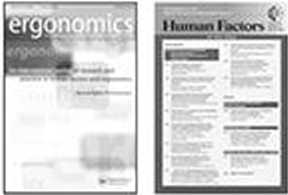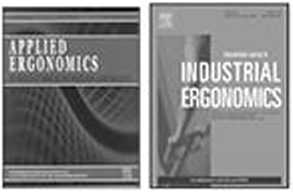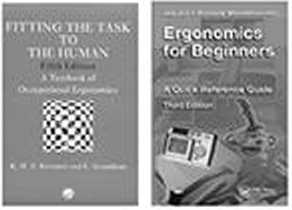6931257373


Science
scientific journals
l
Practice
guidelines, standards, legislation
CM. W.. Vinł*io. ). (2005). Ob;«trvt an«j Sub^ct ve o? /Ourr**H «n f*W of
Ergoro^ ;v 2004 2COS. /&/tuo fjctcrs >.? 16(3). 327 332



Technical Committees "Ergonomics"
ISO TC 159 CEN TC 122
1981 1989 1995 2004
Dul eto! <2004). Comfcr r>g ttonom* ioojI gooi*, m tK* dr,*.gn of ponton systtm* by uv*g ♦fgo^om<^ ston<Jv<fc. C<xrptjttfs wd foduitnsf Stymftrg47 (2*3). 207-222
|
1-'--i-1 Statement 3 |
Content | |
|
During 60 years, a large body of explicit ergonomics knowledge has been developed, and presented as academic papers, practical guidelines, and standards |
• Why society needs ergonomics? • What is modern ergonomics? • How to create business value with ergonomics? -Examples product ergonomics -Examples production ergonomics • Conclusions |
Ergonomists have not enough business impact
Perrow (1983):
• smali number of ergonomists
• lack of control over budgets and people
• ergonomists are seen as protectors of workers
Perrow, C.<1983). The orgAmwhooal C0ntext Of humon foctori engiocering.
Admjntsfrdfiw Sctcncc Oujrtcrty. 28(4) 521-541
Ergonomics is perceived wrong
Survey 130 EurErg ergonomists
• First design, then consider ergonomics (3.7)
• Ergonomics is about chairs (3.1)
• Ergonomics is common sense (3.1)
• Ergonomics experiments take took long (3.1)
• Ergonomics is too abstract (2.7)
• Ergononics information not useful (2.6)
• People can adapt to systems (2.6)
1= never, 2= seldom, 3= sometimes, 4= regularly, 5= always
M*Jand*f. M G. (1999). Scven corrcnon fww, not to «*$onc*T>*cv /ofwnjtaoj/
AV*7V/ of /ndi/itnjł €rgo<wr\cs 25.97-101
8r<«dtt€d. P.. Dul. (2005). Tr* povt*on *nd voc<m of c«ft.fiod £u»oę*an «rgooon*.*ts Rott«*d*n: RSW ErovUnrwf^ty
Wyszukiwarka
Podobne podstrony:
INTRODUCTION This edition of the Scientific Journal Economic Problems of Tourism coincides with the
2012, 8 (4), 297-310^ LogForum > Scientific Journal of Logistics < http://www.logforum.net p-I
SCIENTIFIC JOURNALNO. 836 ECONOMIC PROBLEMS OF TOURISM VOL. 4 (28) 2014 Małgorzata
Scientific Journals of the Maritime University of 2015,44 (116), 5 ISSN 1733-8670 (Printed) ISS
Scientific Journals Zeszyty Naukowe Maritime University of Szczecin
Scientific Journals Maritime University of SzczecinZeszyty Naukowe Akademia Morska w
Zeszyty Naukowe AMW — Scientific Journal of PNA Zeszyty Naukowe AMW — Scientific Journal of PNA ■5T
Zeszyty Naukowe AMW — Scientific Journal of PNA 4. Podobną analizę należy przeprowadzić dla kilku st
Zeszyty Naukowe AMW — Scientific Journal of PNA aparatury sieci stacji referencyjnych. Należy pamięt
Zeszyty Naukowe AMW — Scientific Journal of PNA interesujących referatów [5, 7, 12, 26, 27] dotycząc
Zeszyty Naukowe AMW — Scientific Journal of PNA Rys. 3. Symulacja stref działania stacji referencyjn
Zeszyty Naukowe AMW — Scientific Journal of PNA Z punktu widzenia formalnego koncepcję budowy w Pols
Zeszyty Naukowe AMW — Scientific Journal of PNA Ekspertyza miała wyłącznie charakter teoretyczny.
Zeszyty Naukowe AMW — Scientific Journal of PNA Z badań przeprowadzonych przez ICAO (International C
Scientific Journals /g Zeszyty Naukowe Maritime University
DSC07860 (2) Contents Professor Leszek Starkel 50 Years of Scientific Activity - Piotr KORCELLI, Ada
więcej podobnych podstron